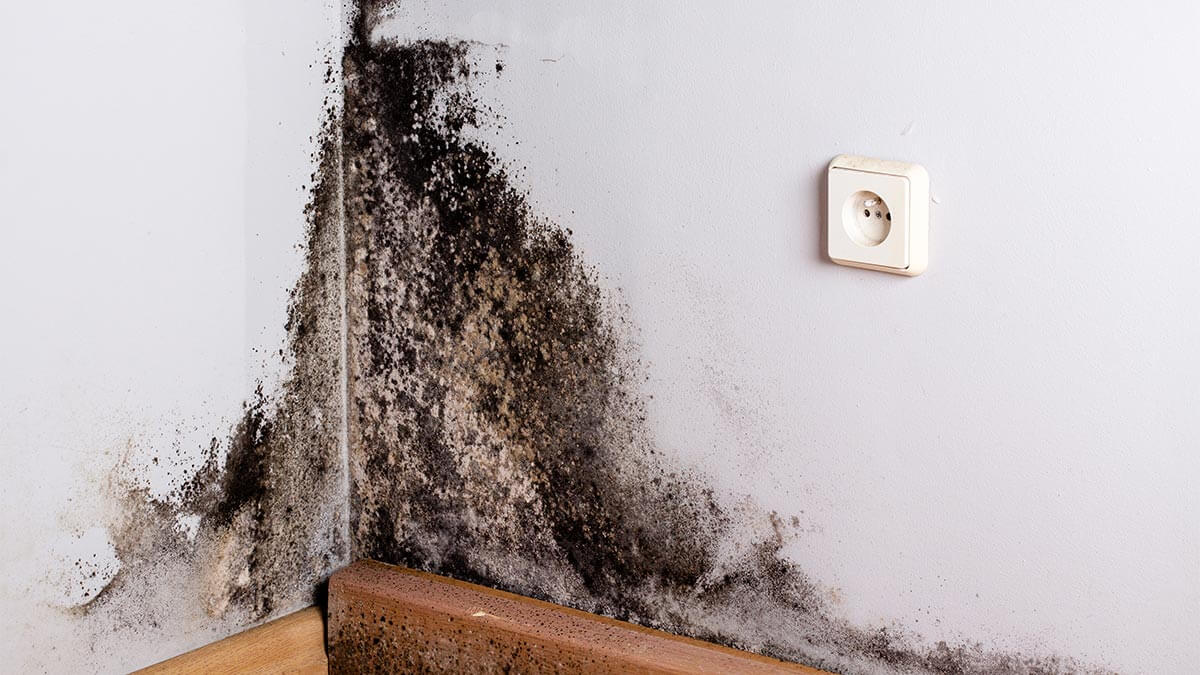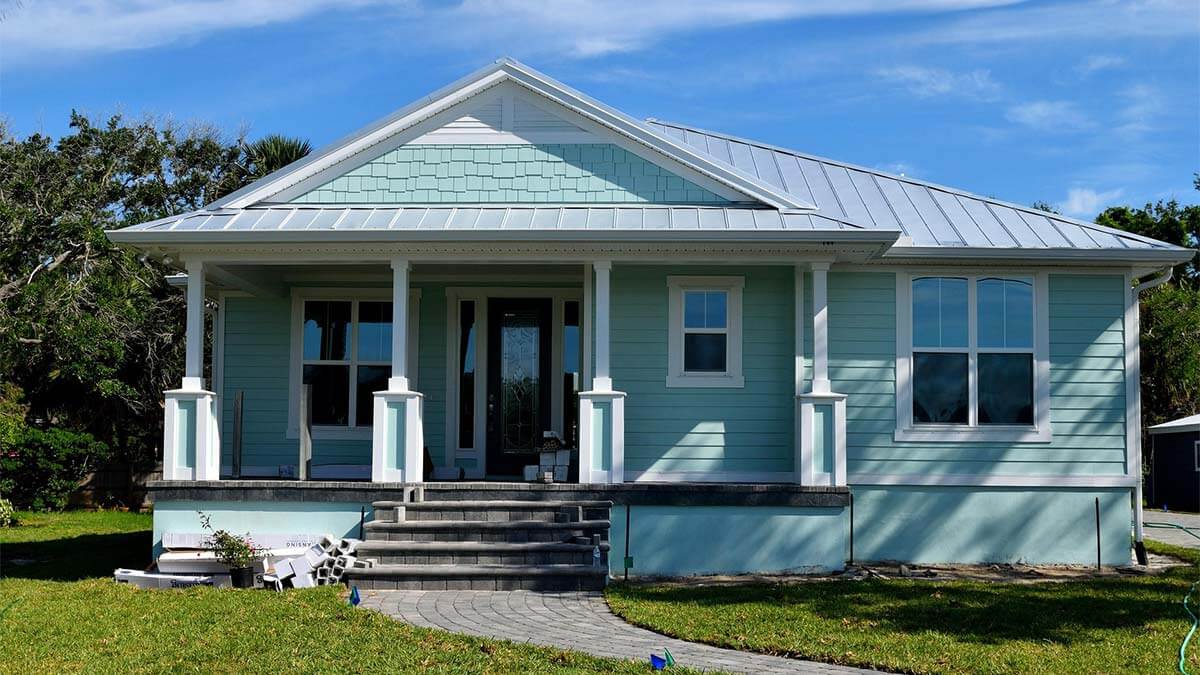Selling a house with black mold can be a daunting challenge. Many homeowners worry about the health implications and potential impact on property value. Understanding the issues related to black mold is crucial for both sellers and buyers.
Addressing mold problems transparently and effectively can facilitate a smoother sales process and help maintain property value.
For those looking for a quick and hassle-free sale, iBuyer services offer a convenient solution, allowing homeowners to sell their properties as-is.
Selling a House With Black Mold
Compare Cash Offers from Top Home Buyers. Delivered by Your Local iBuyer Certified Specialist.
One Expert, Multiple Offers, No Obligation.
Understanding Black Mold
Definition and Characteristics
What is Black Mold?
Black mold, scientifically known as Stachybotrys chartarum, is a type of fungus that appears black or dark green. It thrives in damp, humid conditions and can grow on materials like wood, paper, and drywall. Identifying black mold by its slimy texture and distinct musty odor is essential for addressing its presence in your home.
Health Risks
Potential Health Issues
Exposure to black mold can lead to various health problems, particularly for those with respiratory issues, allergies, or weakened immune systems. Common health issues include:
- Respiratory problems like coughing and wheezing
- Allergic reactions, including sneezing and skin rashes
- Chronic fatigue and headaches
- Severe cases may cause more serious conditions such as infections and lung damage
Common Areas for Mold Growth
Typical Locations
Black mold typically develops in areas with high moisture levels. Common locations within a home where mold may grow include:
- Basements and crawl spaces
- Bathrooms, especially around showers and tubs
- Kitchens, particularly under sinks and around leaky pipes
- Attics with poor ventilation
- Around windows with condensation problems
Legal Considerations
Disclosure Requirements
Legal Obligations
When selling a house, you are legally required to disclose any known mold issues to potential buyers. This includes black mold, which is considered a significant defect. Failure to disclose mold problems can lead to legal consequences, including lawsuits for misrepresentation or fraud. Being transparent about mold issues helps build trust with buyers and can facilitate a smoother transaction.
Potential Liabilities
Risks of Non-Disclosure
Not disclosing mold issues can result in severe legal and financial repercussions. If a buyer discovers undisclosed mold after the sale, you could be held liable for repair costs and any health-related claims. Additionally, the buyer might seek to rescind the sale, leading to further complications and potential losses. Proper disclosure is essential to avoid these risks and ensure a lawful and ethical sale.
Assessing the Mold Situation
Inspection and Testing
Professional Mold Inspection
To accurately assess the extent of mold infestation, it’s crucial to hire a professional mold inspector. These experts use specialized equipment and techniques to detect mold in hidden areas, such as behind walls and under floors. Professional mold inspections can range from $300 to $1,000, depending on the size of the property and the complexity of the inspection.
Types of Tests Available
Professional inspectors typically use various testing methods, including air sampling, surface sampling, and bulk sampling. Air sampling measures the concentration of mold spores in the air, while surface sampling tests for mold presence on surfaces. Bulk sampling involves collecting pieces of materials from the home to test for mold. Each test provides valuable information about the severity and spread of the mold problem.
Evaluating Severity
Criteria for Assessment
When evaluating the severity of mold infestation, consider the following criteria:
- Extent of Spread: How widespread is the mold? Is it confined to one area, or has it spread throughout the home?
- Type of Mold: While black mold is particularly harmful, other types of mold can also pose health risks and damage property.
- Underlying Causes: Identify the sources of moisture that contribute to mold growth, such as leaks, poor ventilation, or high humidity levels. Addressing these issues is crucial to prevent future mold problems.
Mold Remediation
DIY vs. Professional Remediation
Pros and Cons
Choosing between DIY and professional mold remediation depends on the extent of the mold problem and your budget.
DIY Remediation Pros:
- Cost-effective for minor mold issues.
- Immediate action can prevent further spread.
DIY Remediation Cons:
- Limited effectiveness for severe infestations.
- Potential health risks without proper protective equipment and techniques.
Professional Remediation Pros:
- Comprehensive treatment for severe mold issues.
- Safe and thorough removal, reducing health risks.
- Use of specialized equipment and techniques.
Professional Remediation Cons:
- Higher cost compared to DIY methods.
- Requires hiring certified mold remediation specialists.
Cost Factors
Typical Costs
The cost of mold remediation varies widely based on the extent of the infestation and the methods used.
- DIY Remediation: Supplies such as mold cleaners, protective gear, and sealants can cost between $50 and $300.
- Professional Remediation: Professional services typically range from $500 to $6,000, with extensive remediation projects potentially costing $10,000 or more.
Time Frame
Estimated Time
The time required for effective mold remediation depends on the severity of the mold problem and the remediation method chosen.
- DIY Remediation: Small projects might take a few hours to a couple of days.
- Professional Remediation: More extensive projects can take anywhere from a few days to several weeks, depending on the extent of the mold and the need for repairs or renovations.
Selling Strategies for Homes with Mold
Pricing Adjustments
Impact on Home Valuation
Mold issues can significantly impact the value of your home. Buyers often perceive homes with mold problems as high-risk investments, which can lead to lower offers. To account for this, you may need to adjust your asking price to reflect the costs associated with mold remediation and potential health risks. On average, homes with mold issues can see a reduction in value by 10% to 30%.
Marketing the Home
Presentation Tips
To present your home in the best light despite mold issues:
- Highlight Remediation Efforts: If you have taken steps to address mold problems, showcase these efforts. Provide documentation of professional inspections and remediation work completed.
- Focus on Strengths: Emphasize other positive aspects of the home, such as location, layout, and unique features. Use high-quality photos and highlight areas unaffected by mold.
- Transparency: Be upfront about the mold issue and your plans (or efforts) to remediate it. Transparency builds trust with potential buyers.
Targeting Investors
Benefits of Selling to Investors
Selling to real estate investors can be a practical solution for homes with mold issues.
- Quick Sales: Investors often purchase homes quickly, providing a faster solution than traditional buyers.
- As-Is Purchases: Investors are typically willing to buy properties as-is, meaning you won’t need to undertake expensive mold remediation before selling.
- Experience with Repairs: Investors usually have experience handling repairs and renovations, making them more comfortable with the risks associated with mold.
Conclusion
Homeowners should consider all options carefully, including professional advice on mold remediation and legal requirements. Proper assessment and transparent communication with potential buyers are crucial to a successful sale.
- Disclosure Requirements: Legally required to disclose any known mold issues to potential buyers.
- Assessing Mold: Importance of professional inspections and understanding the severity of mold infestation.
- Remediation: Weighing the pros and cons of DIY versus professional remediation and understanding cost factors.
- Selling Strategies: Adjusting pricing, transparent marketing, and targeting real estate investors to facilitate the sale.
For a quick and hassle-free sale, consider contacting iBuyer for a consultation. Explore how you can sell your home efficiently, even with mold issues.
Instant Valuation, Confidential Deals with a Certified iBuyer.com Specialist.
Sell Smart, Sell Fast, Get Sold. No Obligations.
FAQ Section
Yes, but expect a lower price and fewer buyers. Transparency about mold issues is crucial.
Mold can significantly decrease property value and deter buyers due to health risks and potential repair costs.
It depends on the severity and your budget; professional advice is recommended to determine the best course of action.
Yes, failing to disclose known mold issues can lead to legal consequences, including lawsuits for misrepresentation or fraud.
Reilly Dzurick is a seasoned real estate agent at Get Land Florida, bringing over six years of industry experience to the vibrant Vero Beach market. She is known for her deep understanding of local real estate trends and her dedication to helping clients find their dream properties. Reilly’s journey in real estate is complemented by her academic background in Public Relations, Advertising, and Applied Communication from the University of North Florida.




